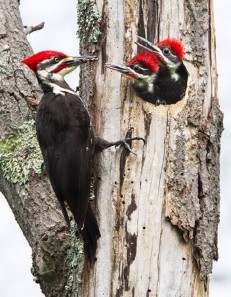Martha Steele
In The Boys in the Boat, a riveting book about the 1936 Olympic gold medal-winning eight-man crew from the University of Washington, the author Daniel Brown frequently uses the term “the swing.” In many team sports, a high-performing athlete can carry the team to victory, despite the ineptitude of his or her teammates. But in rowing, as Brown so eloquently writes, to be successful all individuals in a rowing boat must be performing in perfect harmony together, giving him or herself up with a profound trust in teammates so that the whole achieves its swing. Writes Brown, “All were merged into one smoothly working machine; they were in fact a poem of motion, a symphony of swing and blades.” At these moments, crew members feel a sense of elation, almost a separation from their individuality, as they and the boat are in their swing.
I have often thought of this concept since listening to Brown’s book, applying it to many situations where members of a group shed their egos and their personal ambitions to help or harmonize with others to achieve a shared goal accompanied by emotions of elation, satisfaction, or gratitude. I try to think of my guide dog Alvin and me achieving our swing, where we are working in perfect harmony with each other, stepping together in perfect balance and rhythm, responding to each miniscule movement of the other, shedding our individuality for trust in each other to achieve our own poem of motion.
But I also thought of so many moments in my birding experiences, especially during travel, that remind me of similar feelings.
One of my most memorable birding trips included standing near the Platte River in Nebraska on a chilly March evening. I was with my husband Bob and my close friends as we watched thousands of Sandhill Cranes all around us, on water, land, and in the air, their sounds enveloping us to our cores, and a brilliant evening sky behind the thousands of silhouetted birds in the air. I felt that we could all melt into the ground, so overwhelmed we were with the sights and sounds of this astounding spectacle. At that moment, we were profoundly connected to each other and to the birds, completely stripped of any thoughts about ourselves or our problems, and were filled with awe, wonderment, excitement, optimism, and connection, nearly touching the divine.
Birding trips are not just about the birds; they are just as much, if not more, about the people and surroundings. Seeing a target bird on a trip can easily be dampened by a member of the group out of step with others in the group. By contrast, the same target bird experienced by everyone anxious to share and help each other see the bird, each pulling for the other, can produce levels of connection, humility, and teamwork similar to achieving the swing. Because of my difficulty in spotting birds due to vision and hearing loss, I have had countless times when every member of our group wanted badly for me to see a bird, each one falling over himself to make sure I had the opportunity to see the bird. When I exclaimed certain words (not to be repeated here), the group chuckled and reveled in my excitement, knowing that I had not only seen the bird, but I had seen it well. We had achieved our swing!

Pileated Woodpeckers. Photograph by Sandy Selesky.
It does not take a group of people to experience the swing. It may only be two people. I think of a moment when Bob and I were casually scanning a small lake in northeastern Vermont for water birds when we both heard and exclaimed, in perfect unison syllable by syllable, “Pileated!” We both marveled at the joint response, made even more meaningful by the fact that I was only just learning to identify bird vocalizations after my first cochlear implant. That was a moment of pure swing, pure togetherness, profound sharing, and elation, all centered around a common bird of the northern forests.
But sometimes a group can achieve its swing simply by being together, each member immersed in the group feeling of elation and excitement. Think of the times that many of you have sat around a table in the lodging where you are staying on a birding trip, perhaps enjoying a cocktail hour after a satisfying and spectacular day of birding or mammal sightings. You are doing the daily checklist, sharing again the exciting moments of the day, thoroughly enjoying the company of your friends. To me, that is another level of achieving a swing: being in harmony, focusing on the moment, being generous in spirit, pulling and caring for everyone in the group, and being grateful for one another’s friendships.
So, yes, birders can achieve the swing too. We can be so immersed with the bird, feeling such an emotional connection threaded between and among the bird and the people we are with, that at that moment, we achieve our swing. The shared elation, sheer awe, acts of kindness, and teamwork to help all to see the bird elevates us to a new level of inspiration and appreciation for birding and all that it adds to our lives. So, the next time you see a crew rowing their boat through the water, think about their swing and then about your own swing moments. These are the moments or times that we treasure and are unlikely to ever forget. Time to go birding and find our next swing.
Martha Steele, a former editor of Bird Observer, has been progressively losing vision due to retinitis pigmentosa and is legally blind. Thanks to a cochlear implant, she is now learning to identify birds from their songs and calls. Martha lives with her husband, Bob Stymeist, in Arlington. Martha can be reached at marthajs@verizon.net.